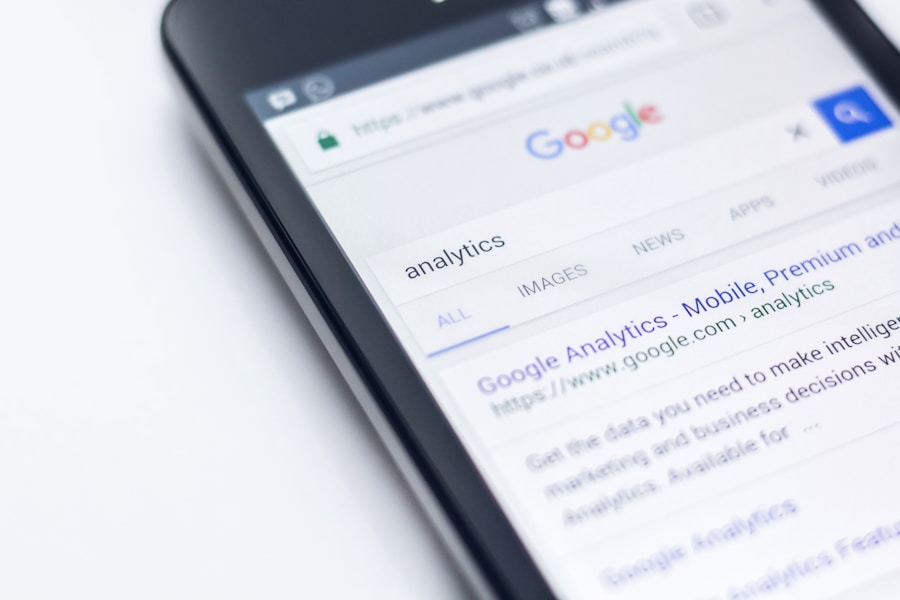Pay-Per-Click (PPC) advertising is a digital marketing model that allows businesses to drive traffic to their websites by paying a fee each time one of their ads is clicked. This model is particularly popular among businesses looking to gain immediate visibility on search engines and social media platforms. Unlike traditional advertising methods, where costs are incurred regardless of the ad’s effectiveness, PPC offers a more performance-based approach.
Advertisers only pay when a user interacts with their ad, making it a cost-effective solution for many companies. PPC advertising encompasses various platforms, with Google Ads being the most prominent. However, other platforms like Bing Ads, Facebook Ads, and LinkedIn Ads also offer robust PPC options.
Each platform has its unique features and audience demographics, allowing advertisers to tailor their campaigns to specific target markets. The flexibility of PPC advertising makes it an attractive option for businesses of all sizes, from small startups to large corporations, as it can be scaled according to budget and goals.
Key Takeaways
- PPC advertising is a form of online advertising where advertisers pay a fee each time their ad is clicked.
- PPC advertising works by allowing advertisers to bid for ad placement in a search engine’s sponsored links when someone searches on a keyword that is related to their business offering.
- The benefits of PPC advertising include immediate results, targeted reach, and measurable ROI.
- Understanding keywords and ad placement is crucial in PPC advertising to ensure that ads are shown to the right audience at the right time.
- Quality score is important in PPC advertising as it affects ad placement and cost per click, and is determined by factors such as click-through rate, ad relevance, and landing page quality.
How Does PPC Advertising Work?
The mechanics of PPC advertising revolve around a bidding system where advertisers compete for ad placements on search engine results pages (SERPs) or social media feeds. When a user enters a query into a search engine, the platform’s algorithm evaluates the bids and relevance of the ads associated with that query. Advertisers select specific keywords they want to target, and when those keywords are searched, their ads may appear in the sponsored section of the results.
The process begins with advertisers creating campaigns that include ad copy, keywords, and landing pages. They then set a maximum bid for how much they are willing to pay for each click on their ad. The actual cost per click (CPC) can vary based on competition for the keyword and the quality of the ad.
This auction-style system ensures that ads are displayed based on both the bid amount and the relevance of the ad to the user’s search intent, which is determined by various factors including ad quality and expected click-through rate.
The Benefits of PPC Advertising
One of the primary advantages of PPC advertising is its ability to generate immediate traffic. Unlike organic search engine optimization (SEO), which can take time to yield results, PPC campaigns can start driving visitors to a website almost instantly after launch. This immediacy is particularly beneficial for businesses looking to promote time-sensitive offers or new product launches.
Additionally, PPC advertising provides measurable results that allow marketers to analyze campaign performance in real-time. Advertisers can track metrics such as click-through rates (CTR), conversion rates, and return on investment (ROI) with precision. This data-driven approach enables businesses to make informed decisions about their marketing strategies, optimizing campaigns based on what works best.
Furthermore, PPC allows for precise targeting options, enabling advertisers to reach specific demographics based on factors such as location, age, interests, and online behavior.
Understanding Keywords and Ad Placement
Keywords are the foundation of any successful PPC campaign. They are the terms or phrases that users enter into search engines when looking for information or products. Selecting the right keywords is crucial because they determine when and where ads will appear.
Advertisers often conduct extensive keyword research using tools like Google Keyword Planner or SEMrush to identify high-volume keywords that align with their business objectives. Ad placement refers to where an ad appears on a search engine results page or social media platform. In search engines, ads can appear at the top or bottom of the SERP, while on social media platforms, they may be integrated into users’ feeds or displayed in sidebars.
The placement is influenced by several factors, including bid amount, keyword relevance, and overall ad quality. Higher-quality ads tend to achieve better placements at lower costs, emphasizing the importance of creating compelling ad copy and landing pages that resonate with target audiences.
The Importance of Quality Score
Quality Score is a critical metric used by Google Ads to assess the quality and relevance of an advertiser’s keywords and ads. It is calculated based on several factors, including click-through rate (CTR), ad relevance, and landing page experience. A higher Quality Score can lead to lower costs per click and better ad placements, making it an essential component of any PPC strategy.
Improving Quality Score requires a multifaceted approach. Advertisers should focus on creating highly relevant ad copy that aligns with the keywords being targeted. Additionally, ensuring that landing pages provide a seamless user experience—such as fast loading times and mobile optimization—can significantly impact Quality Score.
By prioritizing these elements, advertisers can enhance their overall campaign performance while maximizing their return on investment.
Budgeting and Bidding in PPC Advertising
Effective budgeting and bidding strategies are vital for successful PPC campaigns. Advertisers must determine how much they are willing to spend daily or monthly on their campaigns while considering their overall marketing budget. Setting a clear budget helps prevent overspending and allows for better allocation of resources across different campaigns.
Bidding strategies can vary widely depending on campaign goals. Advertisers can choose between manual bidding, where they set individual bids for each keyword, or automated bidding strategies that allow algorithms to adjust bids in real-time based on performance metrics. For instance, Target CPA (Cost Per Acquisition) bidding aims to achieve conversions at a specified cost per acquisition, while Maximize Clicks focuses on generating as many clicks as possible within a set budget.
Understanding these options enables advertisers to select the most appropriate bidding strategy that aligns with their objectives.
Tracking and Analyzing PPC Campaigns
Tracking and analyzing PPC campaigns is essential for understanding their effectiveness and making data-driven decisions. Various tools are available for monitoring campaign performance, with Google Analytics being one of the most widely used platforms. By integrating Google Ads with Google Analytics, advertisers can gain insights into user behavior after clicking on their ads, such as bounce rates and conversion paths.
Key performance indicators (KPIs) such as CTR, conversion rate, cost per conversion, and ROI should be regularly reviewed to assess campaign success. A/B testing different ad variations can also provide valuable insights into what resonates best with target audiences. By continuously analyzing data and making adjustments based on findings, advertisers can optimize their campaigns for better performance over time.
Common Mistakes to Avoid in PPC Advertising
Despite its many advantages, PPC advertising can be fraught with pitfalls if not approached carefully. One common mistake is neglecting keyword research or failing to use negative keywords effectively. Negative keywords prevent ads from appearing for irrelevant searches, helping to conserve budget and improve overall campaign efficiency.
Another frequent error is overlooking the importance of ad copy and landing page alignment. If users click on an ad expecting one thing but are directed to a landing page that does not meet their expectations, it can lead to high bounce rates and low conversion rates. Ensuring consistency between ad messaging and landing page content is crucial for maintaining user engagement.
Additionally, many advertisers fail to monitor their campaigns regularly or make necessary adjustments based on performance data. The digital landscape is constantly evolving; what works today may not work tomorrow. Regularly reviewing campaign metrics and being willing to pivot strategies as needed can significantly enhance the effectiveness of PPC advertising efforts.
In conclusion, while PPC advertising offers numerous benefits such as immediate traffic generation and precise targeting capabilities, it requires careful planning and execution to maximize its potential. By understanding its mechanics, focusing on quality scores, budgeting wisely, tracking performance diligently, and avoiding common mistakes, businesses can leverage PPC advertising as a powerful tool in their digital marketing arsenal.
FAQs
What is PPC advertising?
PPC stands for pay-per-click, a model of internet marketing in which advertisers pay a fee each time one of their ads is clicked. It is a way of buying visits to your site, rather than attempting to “earn” those visits organically.
How does PPC advertising work?
In a PPC campaign, the advertiser bids on specific keywords that are relevant to their target audience. When a user searches for those keywords, the advertiser’s ad may appear in the search results. The advertiser only pays when the ad is clicked.
What are the benefits of PPC advertising?
PPC advertising can be a cost-effective way to drive targeted traffic to a website. It allows advertisers to reach a specific audience, track the performance of their ads, and adjust their campaigns in real time.
What platforms offer PPC advertising?
Major platforms that offer PPC advertising include Google Ads (formerly known as Google AdWords), Bing Ads, and social media platforms like Facebook, Instagram, and LinkedIn.
What are some best practices for PPC advertising?
Some best practices for PPC advertising include conducting keyword research, creating compelling ad copy, optimizing landing pages, and continuously monitoring and adjusting campaigns to improve performance.


